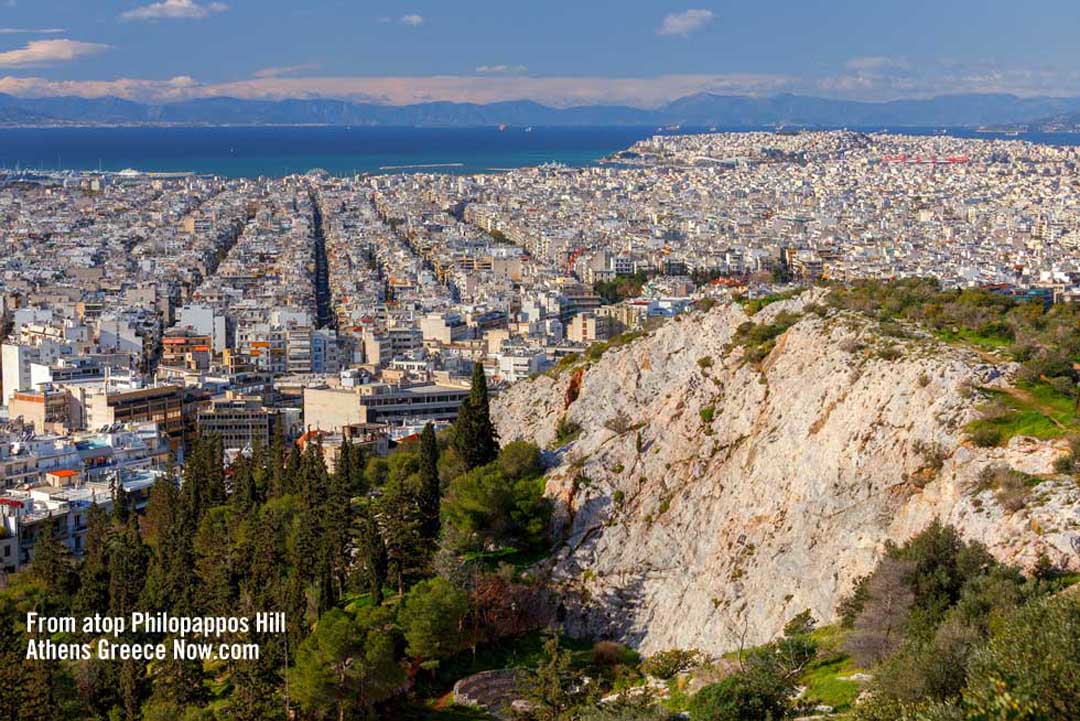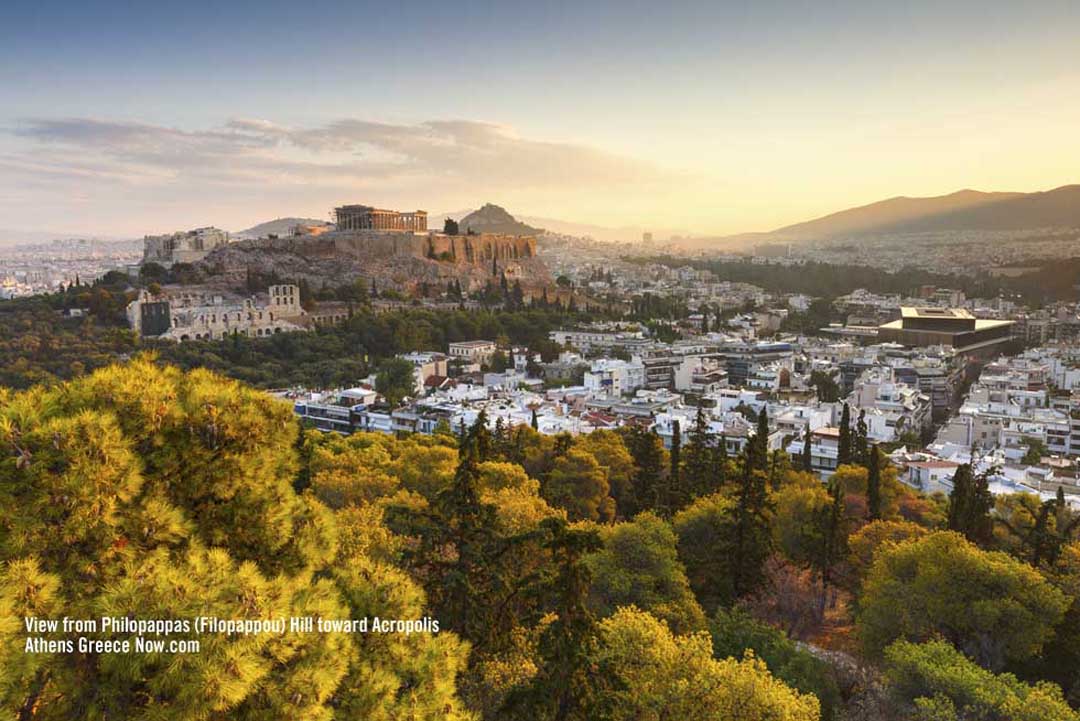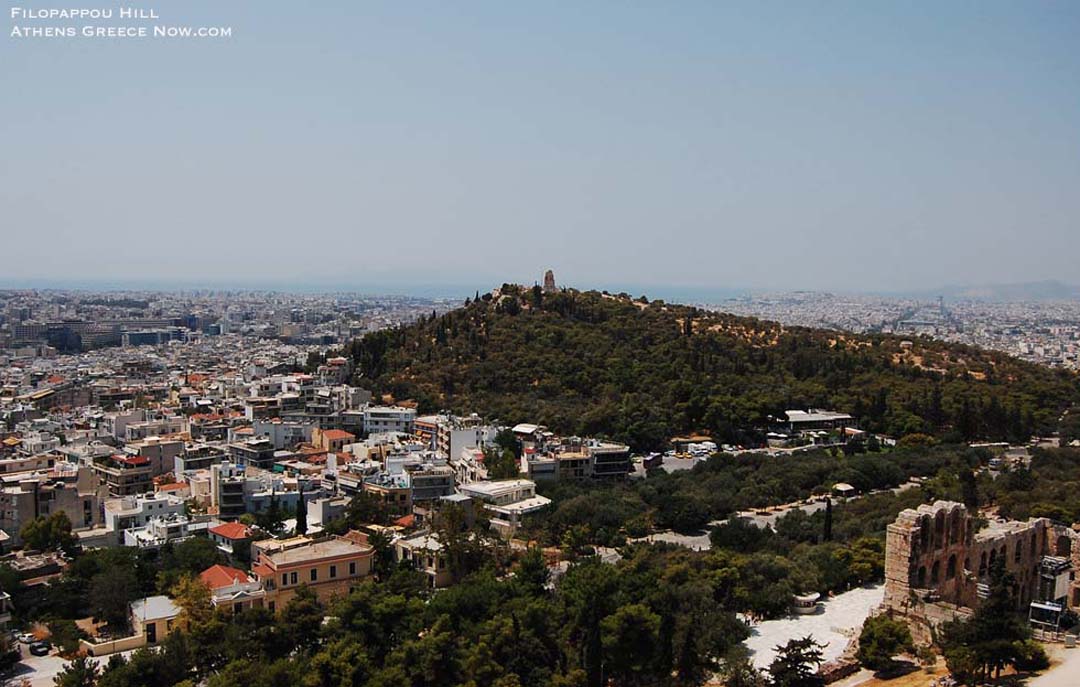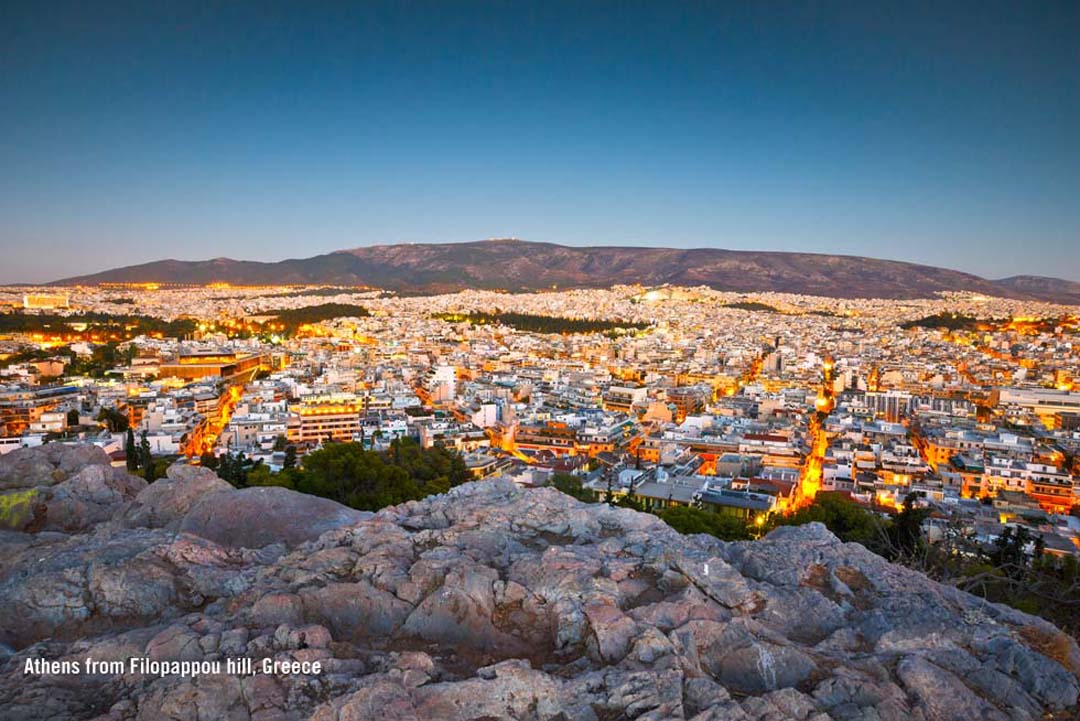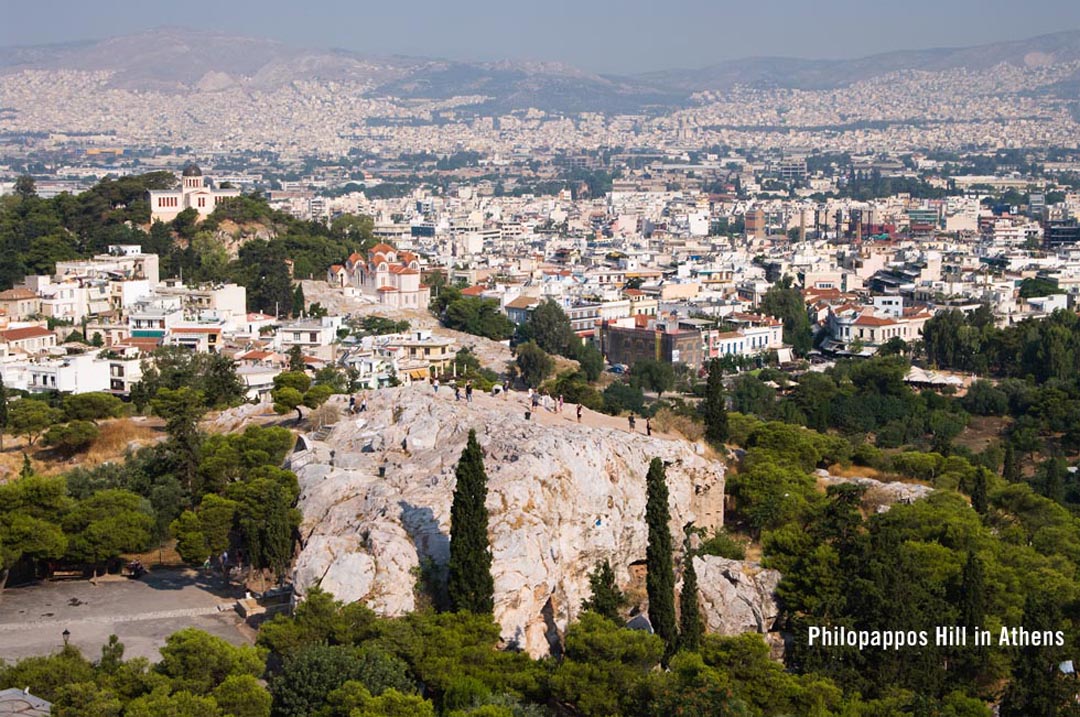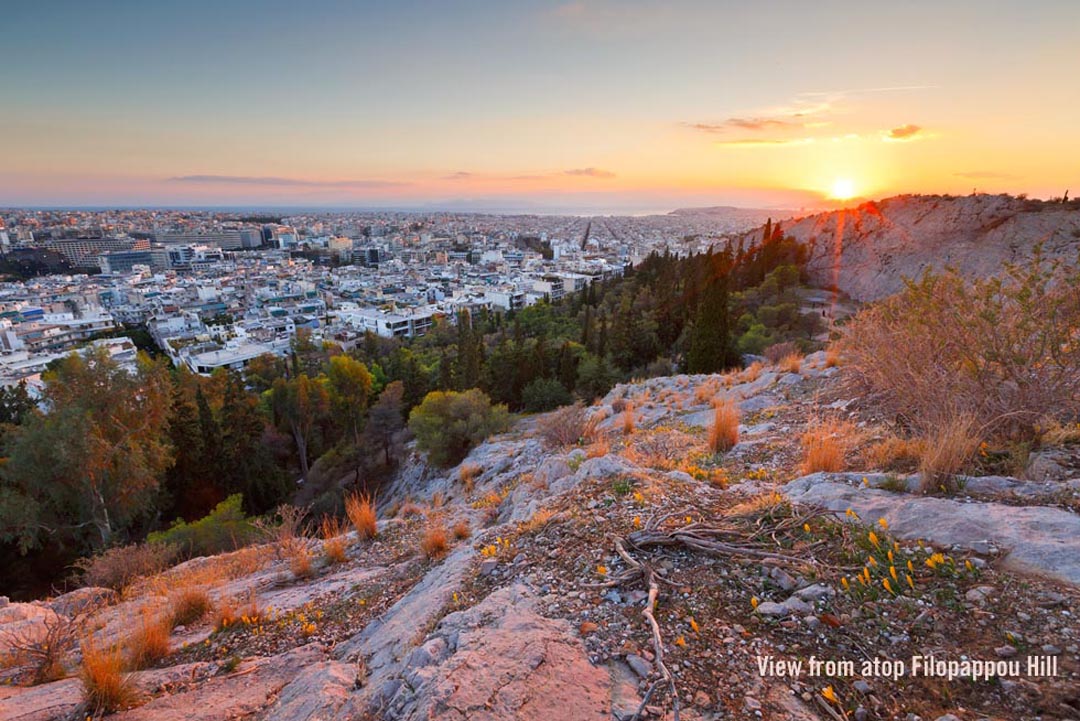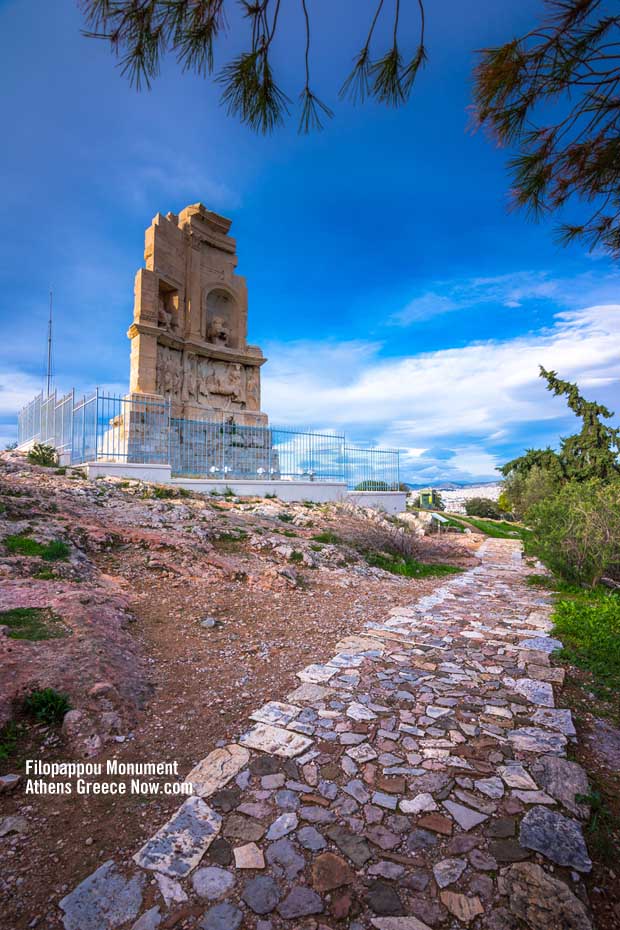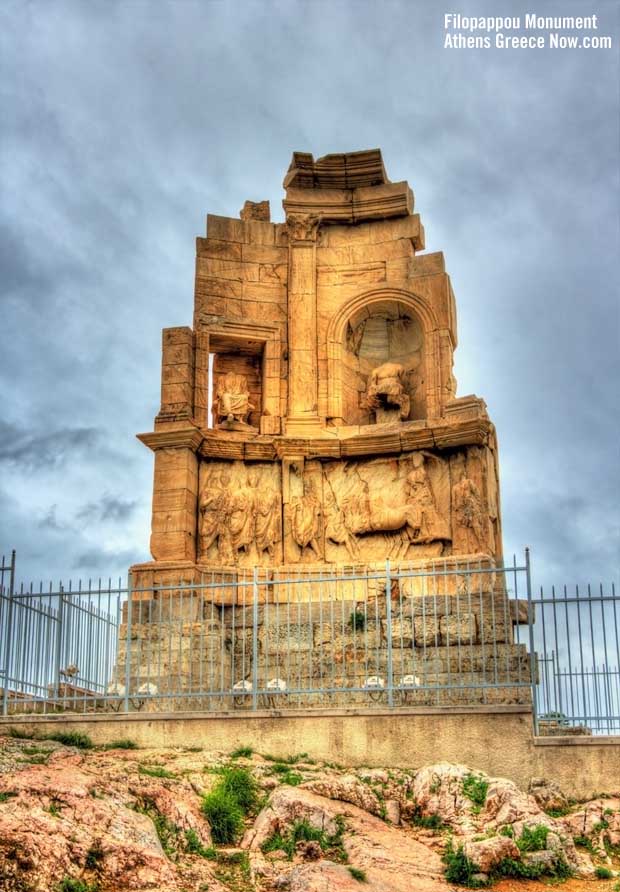Philopappas Hill
"The Hill of the Muses"
Λόφος Φιλοπάππου" (Lofos Philopappou)
Also called Filopappos / Filopappou Hill
Highest point in south Athens at 147 meters tall (482 feet)
Map of Philopappas Hill
Southwest of the Acropolis, Filopappas Hill (location is also called "the Hill of the Muses" or sometimes Mouseion because a tomb of Musaeus, a poet and musician in ancient Attika, is supposed to have been situated on the hill.)
Philopappas Hill is where the Monument of Philopappos and his tomb is, built 114-116 AD in honor of a Roman consul in Athens, his full name being Gaius Julius Antiochus Epiphanes Philopappos (or sometimes Philopappus). He was of Syrian origin. The tomb has a statue of both Philopappas and his father Antiochus IV (a ruler of the Seleucid era Empire from 175 BC until his death in 164 BC. He is most famous for provoking the Maccabean revolt.) The monument is a combination of Hellenistic, Roman and Eastern styles and is considered a unique example of ancient architecture in Athens. It consists of a base, a column and a statue of Philopappos on top.
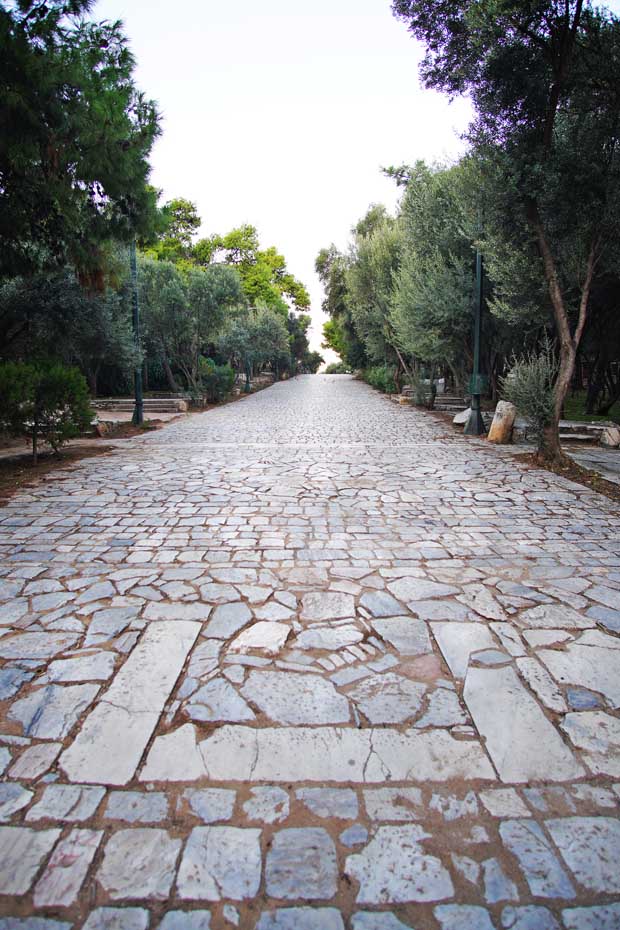
Main walk path on Filopappas Hill
The hill has many caves, including one which is legendary for it is claimed to be the prison of Socrates before his death by hemlock.
The location has consistently been a military position during times of crisis because of of the hill's height and proximity to Piraeus and the important Piraeus roadway. This is also the location used by Francesco Morosini, the Venetian general in charge of the battery of cannon that blew the roof off the Parthenon in 1687 (Morosini also tried to carry off pieces from the Parthenon decorative work, but due to his workmen's faulty methods the operation caused the pieces to crash to the ground and shatter).
Filopappou is a gathering place for kite flying on Lent ("Νηστεία" - pronouncd Nesteia),
Directly north of Filopappas is Pnyx Hill usually called in history the locaiton for the "birthplace of democracy."
Alongside Philoppapos Hill is also the Hill of the Nymphs.
Main facts about this location:
The hill is named after Gaius Julius Antiochus Epiphanes Philopappos, a prince of the Kingdom of Commagene who lived in the 1st century AD and became a benefactor of Athens.
The location of the monument known as the Philopappos Monument, built in honor of Philopappos by the citizens of Athens in the 2nd century AD.
From Philopappos Hill one can see panoramic views of Athens, including the Acropolis, the Saronic Gulf, and the surrounding mountains. The hill is also a popular destination for walking, jogging, and picnicking, as there are many paths and benches scattered throughout the area.
The Acropolis in Athens Greece
The Acropolis - Parthenon and More



Greece's Golden Visa program
